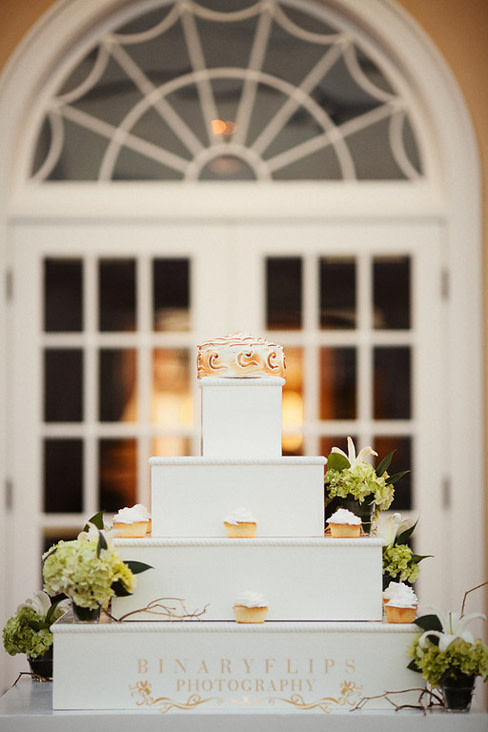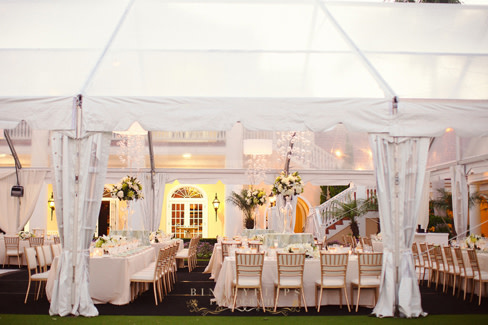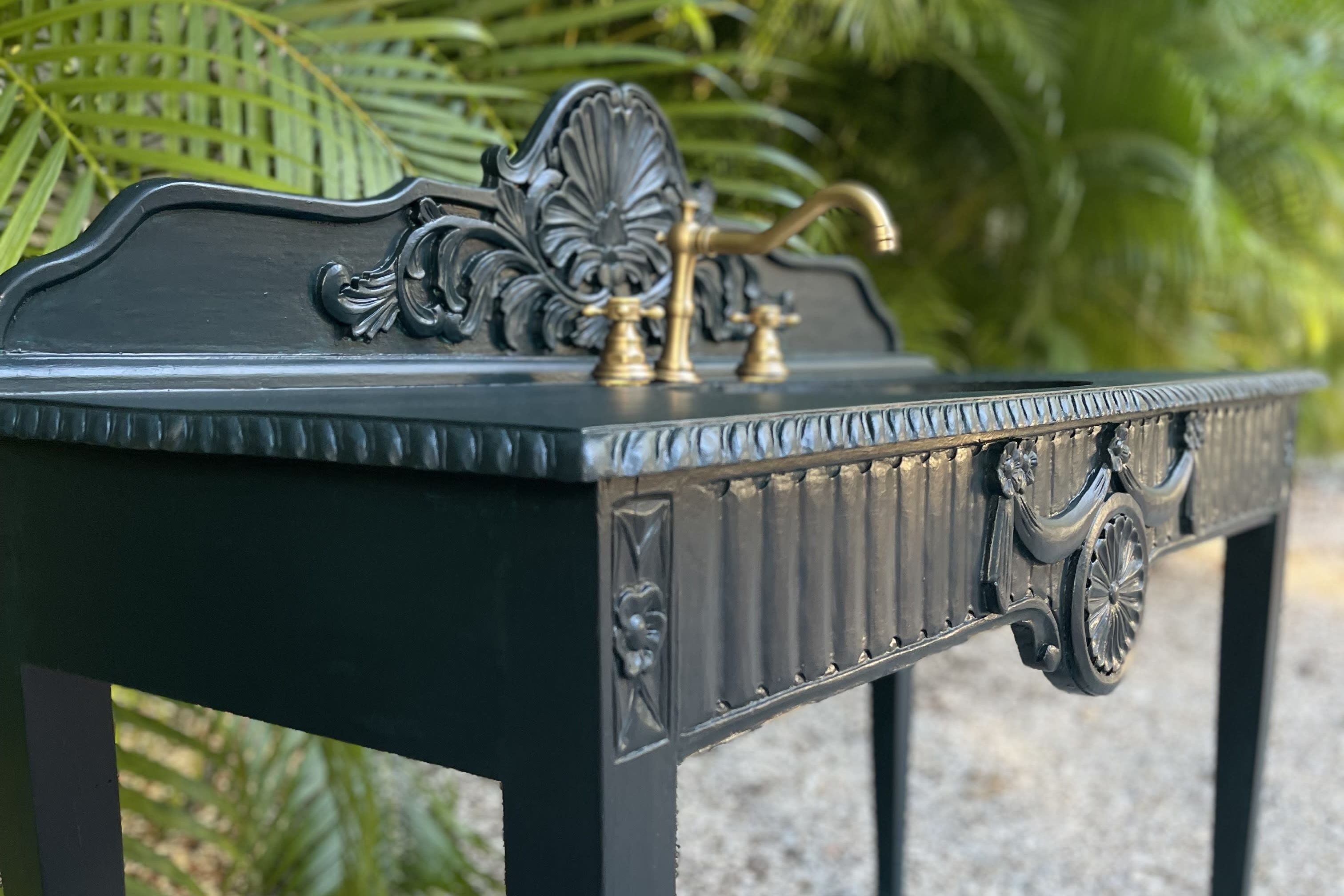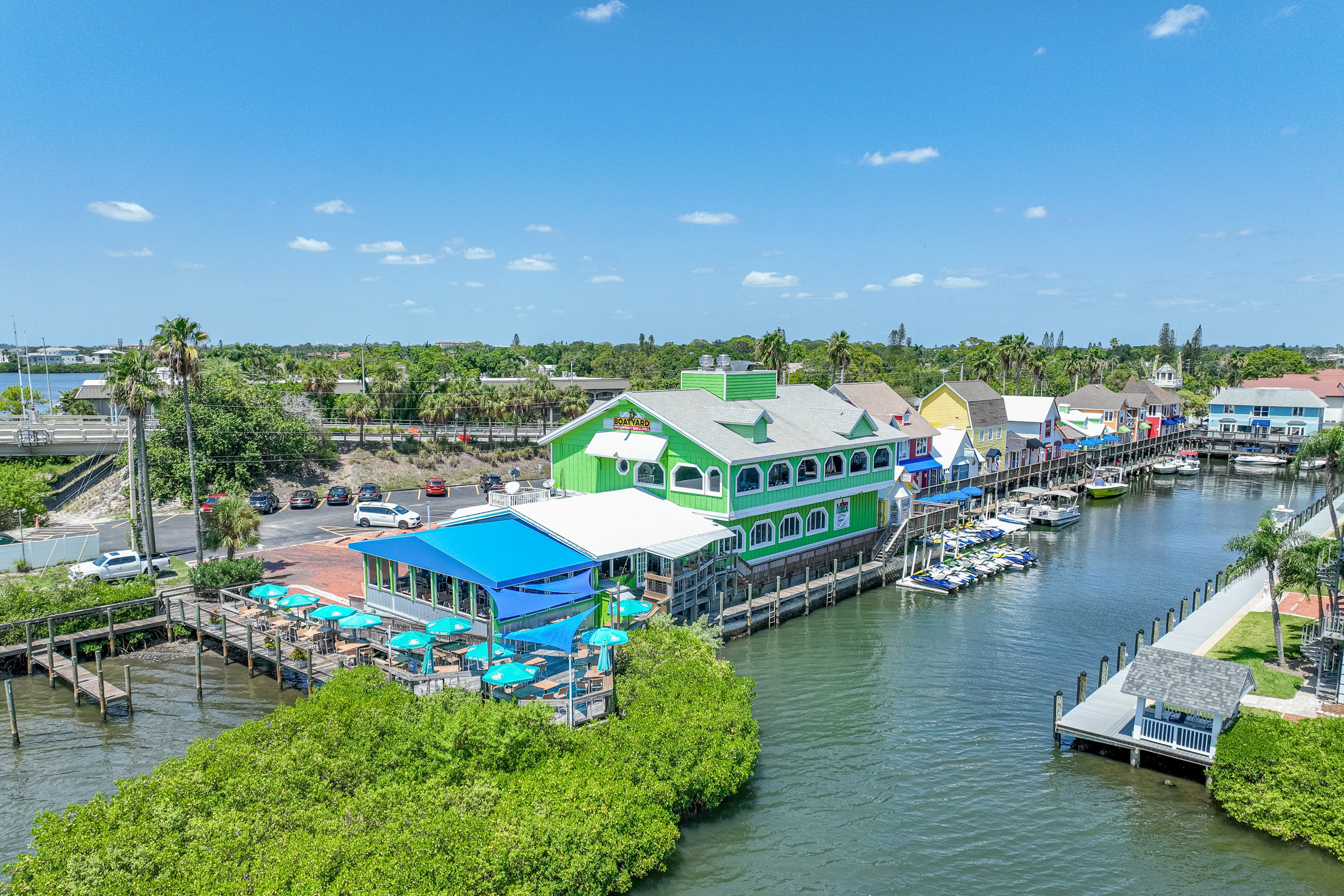Casey Key Home Boasts Grand Asian-Inspired Landscape Design

Boaters speeding down the Intracoastal Waterway off Casey Key may do a double take when they spot the three open-air Chinese pavilions with intricate red latticework and bold blue tile roofs—the tallest rising 27 feet above a meandering 48,000-gallon koi pond.
The pavilions and koi pond are the centerpiece of a remarkable new private garden—four gardens, actually: an Asian pagoda garden, an edible garden, a rose garden and a butterfly garden surrounding a formal glass conservatory—built for a philanthropic couple on an acre and a quarter across the road from their Gulf-front home, where, before 18 inches of fill dirt and 300 different plant species were installed, once stood a few rose bushes, some scraggly trees, a fountain and a patch of grass.
For landscape architect Michael Gilkey and contractor Joe Jannopoulo, it was the assignment of their young careers: a spectacular large bayfront property, an unlimited budget, a years-long timeline, and two eager clients with a sophisticated point of view.
"The homeowners asked me if I'd done anything like this before," says Jannopoulo. "I said I don't know anybody who has."
The nearly three-year process was deeply collaborative and very much "an evolution," says Gilkey. The designers were told from the start that the garden would need to be both intimate enough to be enjoyed by a family of four and comfortable enough to accommodate 100 guests or more at a fund-raising party. But partway into the design process, the homeowner announced that he'd also like to be able to land a helicopter on the property. Gilkey amended the plans to include a grassy landing area bordered by cheery yellow groundcover between the formal garden and the bay.

The pagoda garden was built first. Gilkey and Jannopoulo did months of research on Asian gardens. "We looked at thousands and thousands of pictures," Gilkey says, "and a University of Florida graduate student from China walked the site with us." But in the end they strove for emotional responses over faithful reproductions.
Moon gates with undulating blue-tile roofs that usher guests into and out of the pagoda garden, for example, evoke "a romantic feeling of the journey we've gone through with the owners," says the landscape architect, rather than hewing to one particular period or style. Above the moon gates' traditional circular openings are Chinese letters that spell out, "Mother's Garden."
Jannopoulo constructed the striking red two-story Chinese pavilions, open to the light and air, out of hurricane-proof concrete clad in furniture-quality African mahogany. Ornate roof tiles, blue to signify the sky, were made by hand in China, with symbolic statuary—a phoenix, a dragon with curved horns—placed at the curves of each roof to ward off evil spirits.
The traditional elements of plants, water and rocks are at the pagoda garden's core. Seven towering, 20-foot-tall tabebuia trees were placed strategically throughout; when their delicate purple trumpet blossoms appear in early spring they will fill the sky around the Asian garden with color. At the southern terminus, they planted a sausage tree that, in 20 years, will stand 50 feet tall. Statuary from the homeowners' travels peeks out from a forest of eight varieties of bamboo, among them golden Hawaiian, delicate weeping Mexican, Timor black and stately oldhamii, also known as giant timber bamboo. Tucked among them are a private meditation space, a yoga platform and a raking sand Zen garden.

One hundred-ninety tons of rock—nine semi-trucks full—were shipped from Tennessee and Missouri to recreate the natural feel of an Asian garden; Jannopoulo says it took six months to place the rocks just so in and around the koi pond. Cascading over the rocks on the bayside is fragrant Arabian lilac.
The Asian garden's plants, like the rest of the nearly 300 species throughout the property, were chosen and sited for a natural flow. "We wanted it all to look natural, soft, not purposeful—like nature did it," says Gilkey. "We chose plants that will flower in different seasons, so there's a different star of our show every few months." With all the gardens now complete, the couple has hired a full-time garden manager to maintain the plants and their vision.

One hundred of those 300 species are edibles, and many of them adjoin the Asian garden: Barbados cherry and tamarind trees, jaboticabas, starfruit, dwarf pomegranate, mangos, loquats, papayas, lychees, figs, Chinese persimmons, Persian limes, a banana garden and on and on.
Now the designers and the homeowners are enjoying the fruits of their labors. "I walked the site with the homeowner a few weeks ago, and we were picking blueberries and mulberries and cherries off the trees and eating them," says Jannopoulo. "It was the first time in all these years we walked and laughed and enjoyed the garden. I knew our work was done. Now it's the plants' turn."
Photos by Max Kelly.
For more Sarasota home tours, read Bob Plunket's Real Estate Junkie blog.



